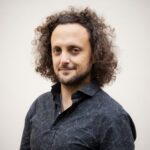Link to Pubmed [PMID] – 16416399
Am. J. Hum. Genet. 2006 Mar;78(3):423-36
The human N-acetyltransferase genes NAT1 and NAT2 encode two phase-II enzymes that metabolize various drugs and carcinogens. Functional variability at these genes has been associated with adverse drug reactions and cancer susceptibility. Mutations in NAT2 leading to the so-called slow-acetylation phenotype reach high frequencies worldwide, which questions the significance of altered acetylation in human adaptation. To investigate the role of population history and natural selection in shaping NATs variation, we characterized genetic diversity through the resequencing and genotyping of NAT1, NAT2, and the pseudogene NATP in a collection of 13 different populations with distinct ethnic backgrounds and demographic pasts. This combined study design allowed us to define a detailed map of linkage disequilibrium of the NATs region as well as to perform a number of sequence-based neutrality tests and the long-range haplotype (LRH) test. Our data revealed distinctive patterns of variability for the two genes: the reduced diversity observed at NAT1 is consistent with the action of purifying selection, whereas NAT2 functional variation contributes to high levels of diversity. In addition, the LRH test identified a particular NAT2 haplotype (NAT2*5B) under recent positive selection in western/central Eurasians. This haplotype harbors the mutation 341T–>C and encodes the “slowest-acetylator” NAT2 enzyme, suggesting a general selective advantage for the slow-acetylator phenotype. Interestingly, the NAT2*5B haplotype, which seems to have conferred a selective advantage during the past approximately 6,500 years, exhibits today the strongest association with susceptibility to bladder cancer and adverse drug reactions. On the whole, the patterns observed for NAT2 well illustrate how geographically and temporally fluctuating xenobiotic environments may have influenced not only our genome variability but also our present-day susceptibility to disease.







